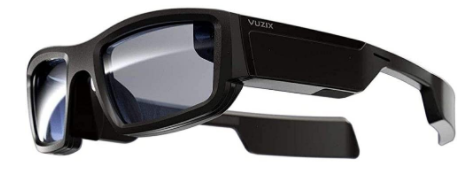Today’s wearables have come a long way from the days of the Swatch and the Walkman. Current technology allows an instant connection to vast computer resources, making wearables one of the fastest growing smart tech industries, reports PRNewswire.com. A funky Keith Haring-inspired wristwatch may have been the ultimate “cool” in its heyday, but it could only do two things: look awesome, and tell time.
Today’s wearables include wrist-ware like the Apple Watch and FitBit, items for the ears such as Beats and Bluetooth, and even vision enhancing smart glasses. Vuzix is at the front of the Smart Glasses and Augmented Reality (AR) technology and products pack. Smart Glasses incorporate features to enhance eyesight, like expanded peripheral vision, waveguide optics and binocular displays, and the ability to process 3D images. They also allow the wearer to use them like a smart phone and music player, with all wireless components built into the frames, which the company refers to as “stylish.”
“Vuzix has been working on wearable display technology for the last 20 years and we are excited to announce this culmination of breakthroughs in the development of our technology that opens the door for a new wave of consumer and enterprise smart glasses devices from Vuzix,” said Paul Travers, Vuzix’ President and Chief Executive Officer.
Apple products like AirPods and Beats are popular in the “hearables” market. During the second quarter of 2020, Apple says it shipped over 23 million hearables, perhaps benefiting from people’s desire to stay connected during the pandemic. Thanks to the strong showing of products like these, Apple currently controls 34.2 percent of the wearables market.
Wearable devices could not function without support systems, and ongoing 5G outreach and developments in other telecommunications arenas continue to make better connections possible. Alphabet Loon balloons, for example, bring floating cell towers to regions that may have previously had no service. And Microsoft Hololens 2, is giving companies the advantage of speedy onboarding and personnel processing. Its dedicated ASIC (Application-Specific Integrated Circuit) and sensors represent a leap for intelligent edge processing as information is “read” into a database.
Snap, Inc. CEO Evan Spiegel also weighed in. His company states its mission as providing professional help that empowers government and private industry clients to address tomorrow’s challenges through better alignment of technology with their mission and business objectives. Spiegel adds, “We continued to grow our community and business in a challenging and uncertain environment. I am proud of our team for innovating on new experiences for our community and driving value for our partners, demonstrating the importance of our service in people’s lives. We are grateful that the resilience of our business has allowed us to remain focused on our future growth and opportunity.”




Reader Interactions